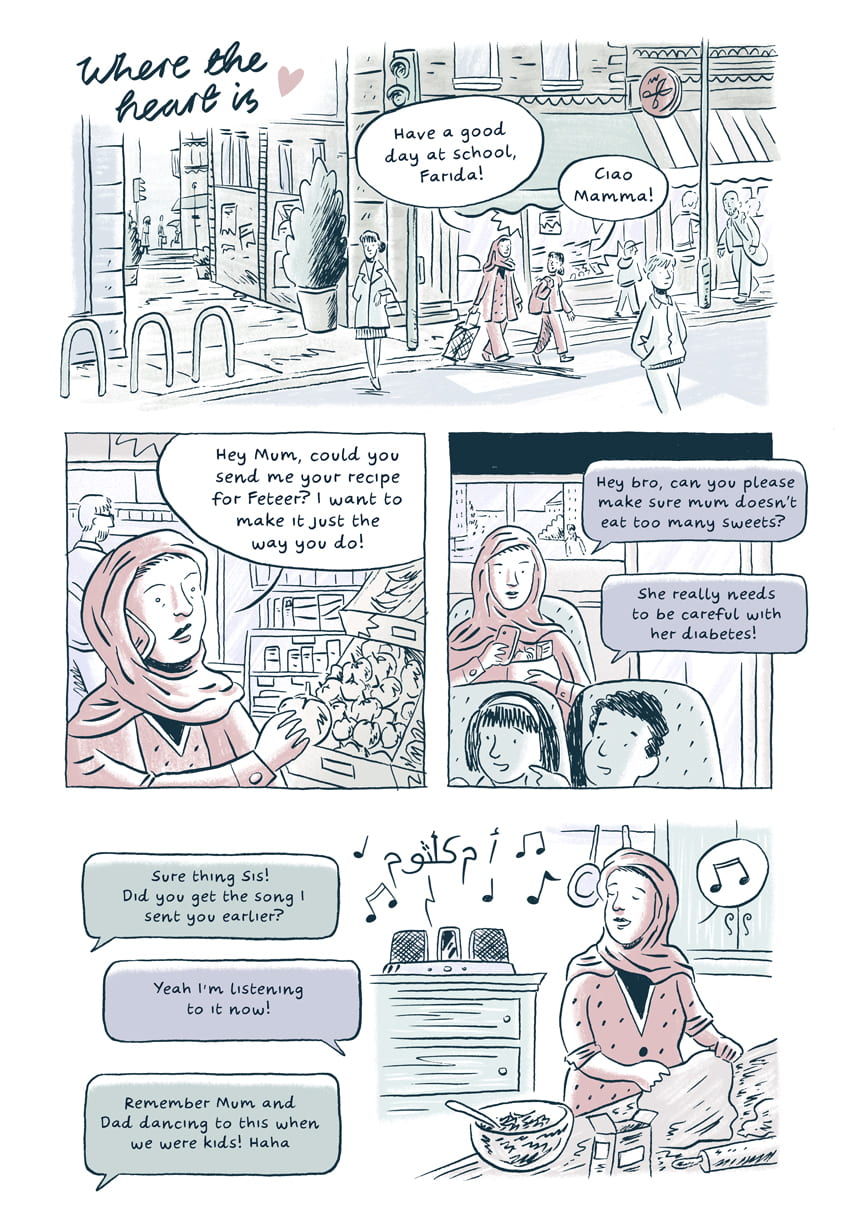Ethno-graphic collaborations
By alex.clegg, on 31 March 2022
Author: Laura Haapio-Kirk
During my research in Japan, I became increasingly aware of the importance of visual communication, for example stickers and emoji, for how many of my research participants were using their smartphones. As a result I decided to experiment with collaborative graphic methods that combined both analogue and digital media, to explore a range of topics including participants’ relationships to their smartphones and their notions of life purpose (ikigai in Japanese). I found that through such collaborative graphic approaches I was able to foreground their framing and aesthetic choices in conducting and disseminating my research, and importantly, was able to access different kinds of knowledge than without such collaborative approaches.
For example, Ito Megumi, one of my research participants in my rural site, is an artist who I invited to paint her response to the word ikigai. The resulting painting below was then used as the basis for elicitation during remote interviews conducted over zoom. In grounding the interviews in a painting she had created, the discussion was directed by her sense of narrative which emerged as non-linear, highlighting connections throughout her life, represented by motifs in the painting. It was only by using her painting as the basis of our discussion that I was able to understand how she thought of this elusive topic which had proved rather contentious among many of my research participants, associated as it is with the pressure to finds one’s ikigai as one gets older. It was through such drawing exercises that I was able to see how people felt that ikigai, and other intangible topics, figured in their lives, drawing out feelings that are difficult to put into words.

Painting by Ito Megumi, 2021
When I was asked by one of the editors of Trajectoria, a new experimental journal published by the Japanese National Museum of Ethnology, to submit a proposal for a special issue, I knew that I wanted to use this opportunity to further explore the collaborative potential of graphic methods in anthropological research. The editors were responsive to the idea, as were several contributors who I approached. After almost a year of collaboration, the special issue ‘Ethno-graphic Collaborations: Crossing Borders with Multimodal Illustration’ has just been published. The issue includes wonderful contributions from two anthropologists (Dimitrios Theodossopoulos and José Sherwood González) and two anthropologist-artist collaborators (Charlie Rumsby with Ben Thomas, and myself with Ito Megumi), along with an extended discussion by Dimitrios. In the piece by Ito Megumi and myself, you can hear Megumi talking about the various elements of her painting in embedded audio clips, turning her painting into a multimodal exploration that blurs the distinction between research object and research dissemination.
The special issue also contains several discussion videos between all of the contributors, in which we talk more broadly about the gifts of graphic anthropology and modes of collaboration. Please see my introduction for more details on the contributions, and the various ways in which they highlight different potentials of collaboration through graphic experimentation in anthropological research.
 Close
Close






